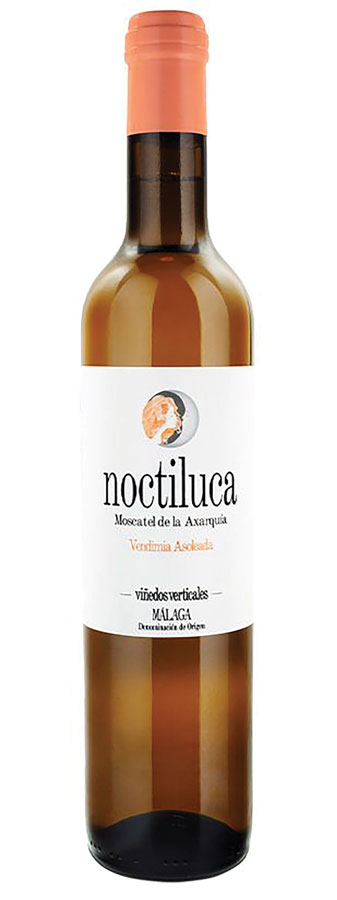Elevate your Christmas meal with a luxurious sweet wine to finish …
The festive season comes with its fair share of sweet treats: cookies, mince pies, candies and chocolates, so what better time to see what sweet nectars are worth seeking out from the wine world. Historically, sweet wines were very much sought after because of their luxurious intensity, beautifully honeyed texture and fascinating complexity. They also have incredible potential for ageing, top-notch wines often evolving into mesmerising kaleidoscopes of aromas and flavours. Before refrigeration and the control that comes with modern winemaking, keeping sugar levels high was also the best way to assure the stability of a wine. With trends changing, sweet wines sadly dropped in popularity, but their beauty never wavered.
There are four ways to make sweet wines and all of them seek to concentrate as much fructose in the grapes as possible. Since much of the sugar remains unfermented in the wine, the alcohol levels typically remain low, sometimes as low as 5.5 per cent alcohol by volume (ABV).
The most common method consists of harvesting the grapes as late as possible in the season to allow the grapes to overripen, which increases natural sweetness. As the berries then begin to shrivel up, the ratio of fructose to moisture favours the sugar, and the sweetness and aromatic concentration start to rise dramatically. These wines are labelled as “late harvests”, “vendange tardive” or “spätlese” depending on their country of origin.
These late harvest wines display a wonderful balance between sweetness and refreshing acidity. They are very versatile with food so keep them in mind when planning fruit-based desserts such as pavlova, trifle or bavarois. In France, late harvest wines are often served with foie gras (duck liver) at the start of the meal or with blue cheeses before dessert.
Another technique consists in drying the grapes, almost into raisins. This can sometimes happen naturally before the harvest, by letting the berries shrivel on the vines, or it can also be encouraged after the fruit is picked. Grapes are laid on straw mats in the sun, hung from rafters in attics, or stored in a special dehumidifying room with controlled airflow and temperature. This drying process can take anything from a few weeks to a few months. Wines made from dried grapes are known as Passito, Recioto and Vin Santo in Italy. In Germany and Austria, they bear the name Strohwein. France labels them Vin de Paille and New World countries as Straw Wines.
Sweet wines were very much sought after because of their luxurious intensity, beautifully honeyed texture and fascinating complexity.
Looking for a bit of inspiration for your Christmas table? Tuscan Vin Santo with Panettone, Recioto della Valpolicella with a black forest gateau-inspired Christmas log or a Austrian Grüner Veltliner Strohwein served with a traditional Christmas Stollen are all matches made in heaven.
In certain years, Mother Nature offers winegrowers the opportunity to produce Eiswein – a wine made from grapes picked late in winter when temperatures drop to minus 7°C or less. Berries are pressed while still frozen to extract a thick nectar low in water content. The result is sublime – luscious, intense and incredibly complex, balanced by an electric acidity. Those elixirs are a real treat, but they don’t come cheap. Canada and Germany are the masters of this style. Other interesting examples are available from countries such as Slovenia, Sweden and even China. Some winemakers freeze the grapes or the grape must at the winery to artificially replicate the style, but the true magic of ice wine is in the hands of Mother Nature, who sadly struggles more and more with global warming.
Finally, the most enigmatic sweet wines of all are produced from noble berries. Bunches of grapes are left to hang on the vines late in the year, until a specific fungus, called Botrytis Cinerea develops on the grapes, and it is considered a beneficial noble rot. For this phenomenon to happen, a very specific microclimate is required. Rivers and lakes are an important trigger for the development of Botrytis and all sweet wine regions of the world cherish their nearby body of water. Making botrytised wines takes a lot of hard work – harvests take place in multiple waves called “tries” that require qualified staff to select individual berries over several weeks. In Germany and Austria, botrytised wines are labelled “beerenauslese”, and “trockenbeerenauslese”. Austria’s lake Neusiedle area produces sublime sweet wines and Rust village is world famous for its wonderful Ausbruch.
In Hungary, Tokaj, “the king of wines and wine of kings”, has been produced for over four centuries. There, the Furmint variety produces wines with luminous freshness and mind-blowing complexity. They are perfect to enjoy over the Christmas period, served with Baked Alaska, spiced fruit cakes or iced nougat. France excels too at the noble stuff – Sauternes, Barsac and Quarts-de-Chaume are very fine examples of botrytised Sémillon and Chenin Blanc. Further away from us, New Zealand and Australia are also producing world-class examples.
All sweet wines are the result of small yields. It takes an average five to six kilos of grapes to produce one litre of wine, so they tend to command premium prices, but every single golden drop of them is worth it. Joyeux Noël à tous. @julie_dupouy

Anselmi, I Capitelli, Bianco Veneto IGT, Italy, €35; www.atasteofitaly.ie

Pinot Gris, Botrytis, Greywacke, Marlborough, New Zealand, €28, www.64wine.ie.

Vin Santo del Chianti Classico, Tenuta San Vitto, Malmantico, €32.95; www.mitchellandson.com.

Málaga, Noctiluca, Vendimia Asoleada, Viñedos Verticales, Spain, €31; www.green manwines.ie.

Gelber Muskateller, Beerenauslese, Türk, Austria, €29; www.whelehanswines.ie.





